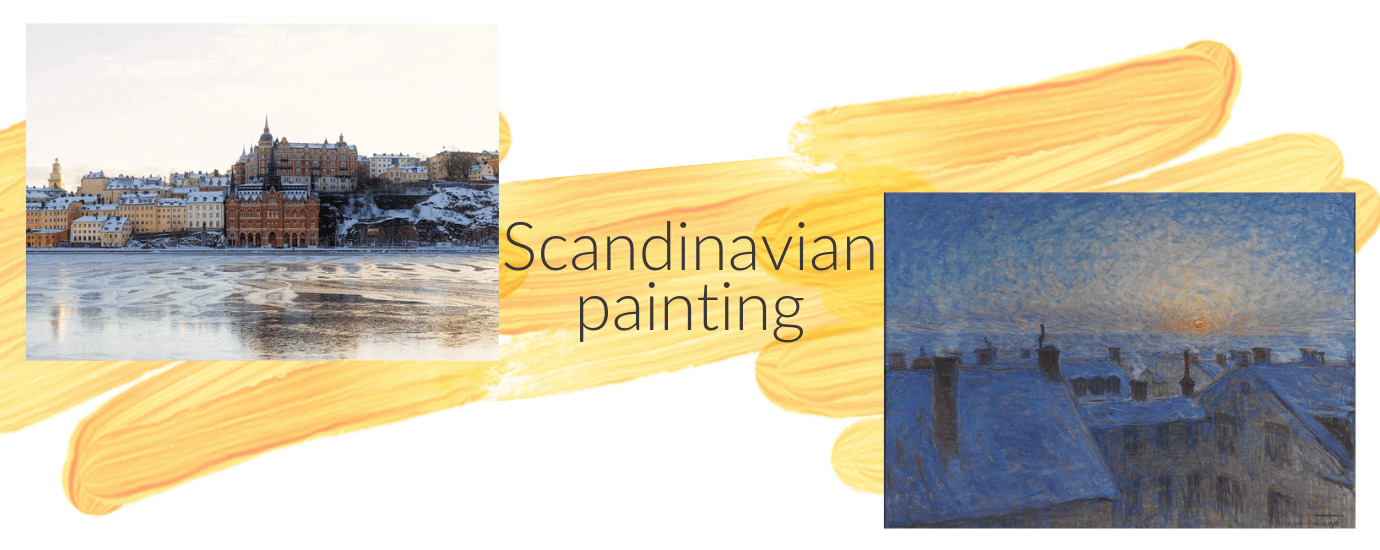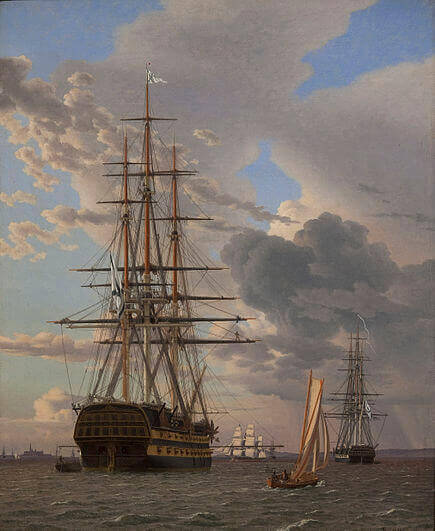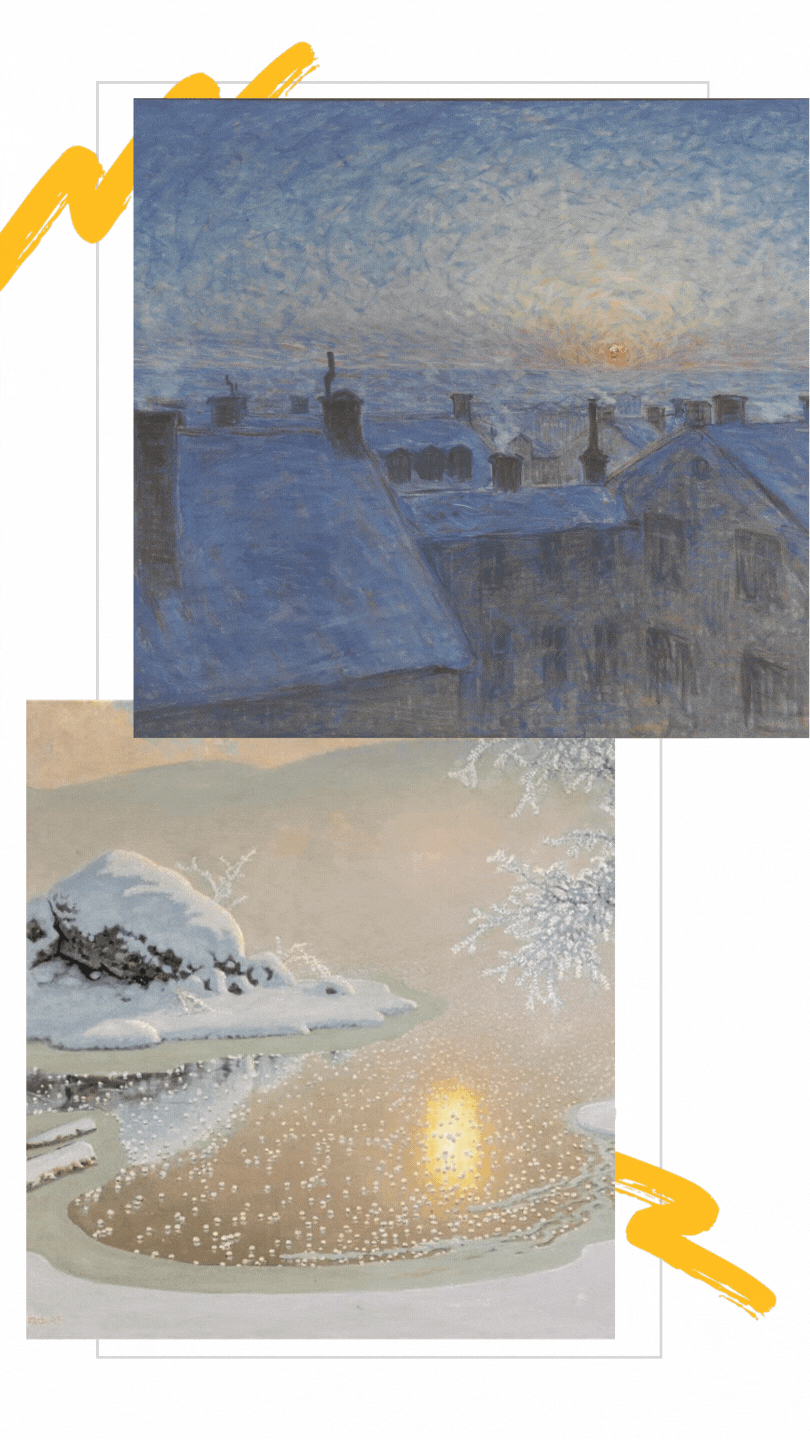Scandinavian painting lightgs up the northern light
- 12/05/2021
Back on their northern lands, painters, including Christoffer Wilhelm Eckersberg (1783-1853), free themselves from neoclassicism, academic conventions, orders and patronage of the Royal Court to engage in new ways .
Preferring a naturalistic style and outdoor painting rather than workshop, their depiction picture landscapes, views of the city or even simpler subjects like fishermen and even cobblers.
It is then considered that the Danish painting is in full golden age to the dawn of the 1850s.

The Russian warship Asow and a frigate anchored in Elsinore harbor,
1828, oil on canvas, 63 x 51 cm)
FROM THE SKAGEN’S SCHOOL TO GREZ-SUR-LOING

Like the French landscape painters who meet at Barbizon between 1825 and 1875, Danish artists are used to meet at Skagen, a small fishing village at the northern tip of the country, to enjoy the exceptional light created by the meeting of the waters of the North sea and the Baltic.
Around Michael Ancher (1849-1927) and Peder Severin Kroyer (1851-1909), the School of Skagen is decisive for the evolution of Scandinavian painting, combining impressionism with the Nordic tradition.
In artworks of the period, we find the difference between the cold light of the North and the one from the South.
Inspired by the Danish, Swedish painters begin the same step in 1870 by moving to Grez-sur-Loing (Seine-et-Marne) in order to observe French Impressionism and broadcast it when they return to Sweden.
Combining this technique with the specifics of their style, the Swedish paintings are offering a large place to the northern light in nocturne and often snowy landscapes.
FINLAND AND NORWAY FOLLOW THE MOVEMENT
Finnish, dominated for a long time by their neighbors (Sweden, and then Russia) and little spoiled by extreme weather conditions, free themselves and paint less gloomy pictures by drawing inspiration from an exacerbated patriotism and the mythical past of their land.
On their side, Norwegians are the last to follow the movement in the early 1910s by representing scenes of everyday life impregnated with the Northern light.
JONAS LUNDH, THE HEIR
Boats, landscapes and objects ... these are the main subjects of the Swedish artist Jonas Lundh artworks that you can find on the website of Carré d’artistes®.
Bathed in the Nordic light, Lundh paintings perfectly follow the tradition of Scandinavian Impressionism started nearly 200 years ago.
Musician, drummer and percussionist, he transmits harmony and rhythm on his canvas by painting with different sizes of cardboard pieces and "by putting color on what some call the imagination"
THE NEO-COLLECTOR'S GUIDE
Everything you always wanted to know about the art market but were afraid to ask!
The art market often appears to be a domain reserved for a privileged few...
This is not true: accessible to all, the art market is only waiting for its new collectors.
For those who still have a doubt :
Here are the answers to the questions commonly asked!
What is a work of art?
What is the purpose of art?
What is the purpose of a certificate of authenticity?
What should you look out for when buying a work of art?
















